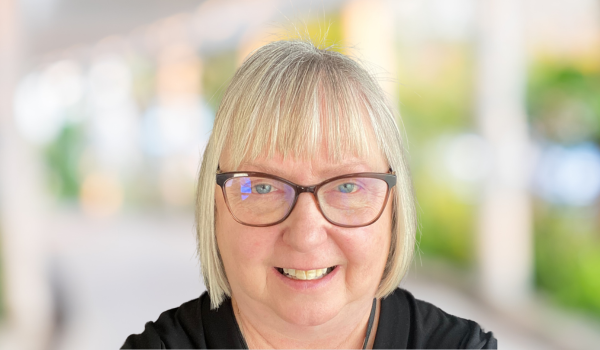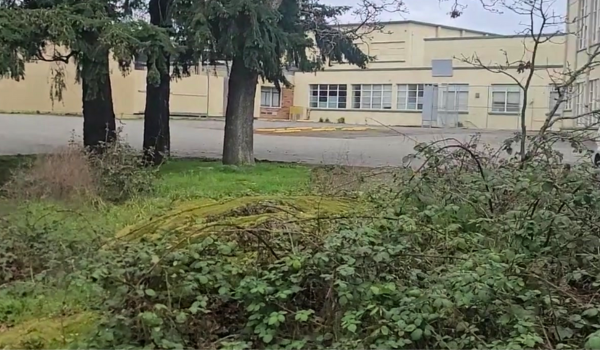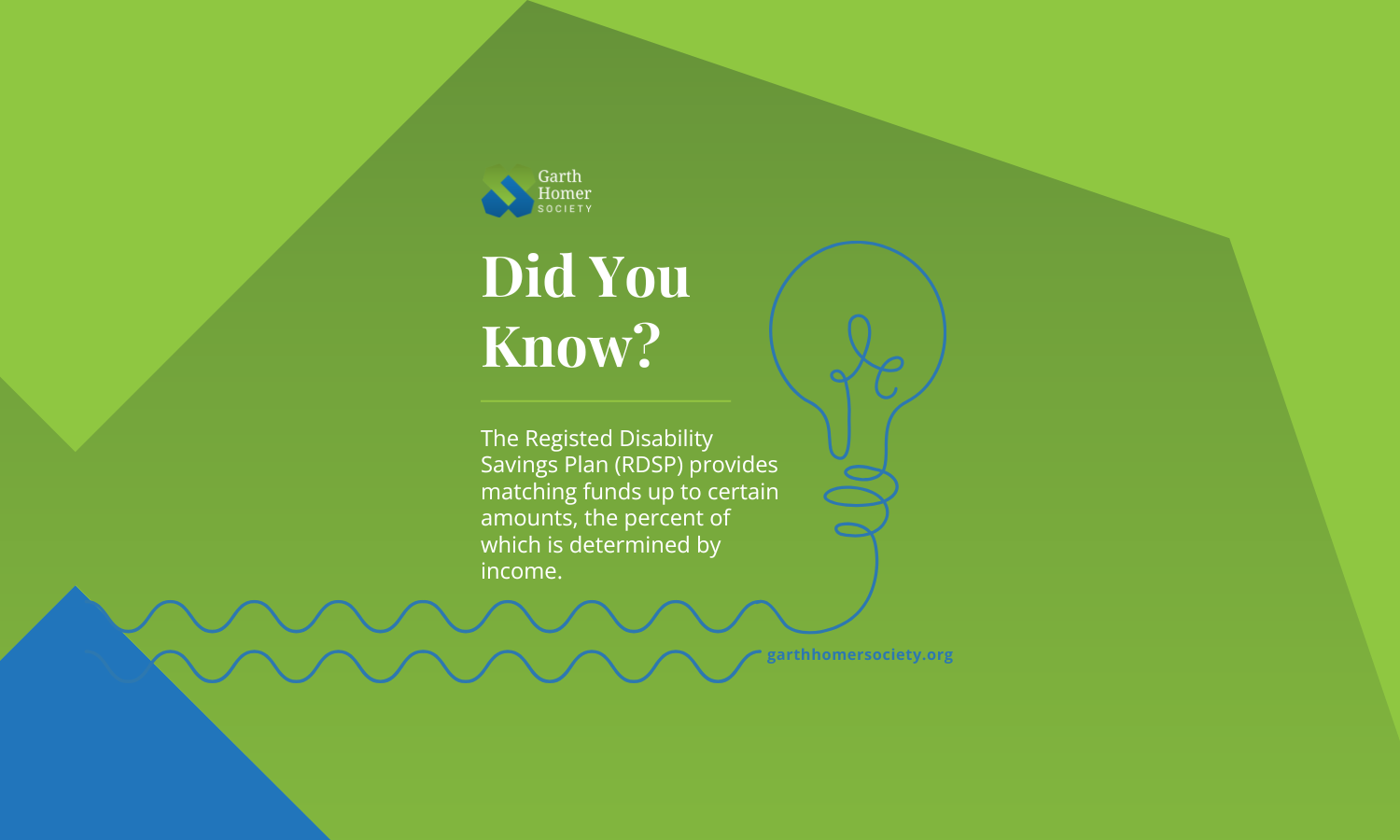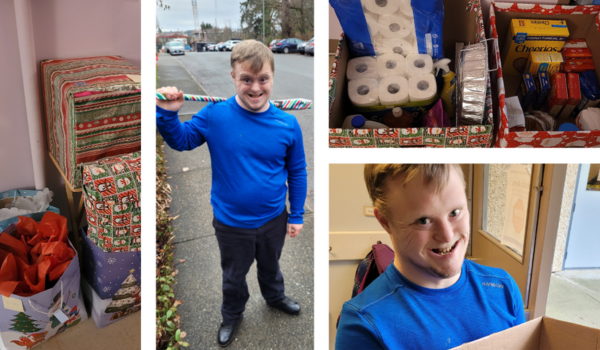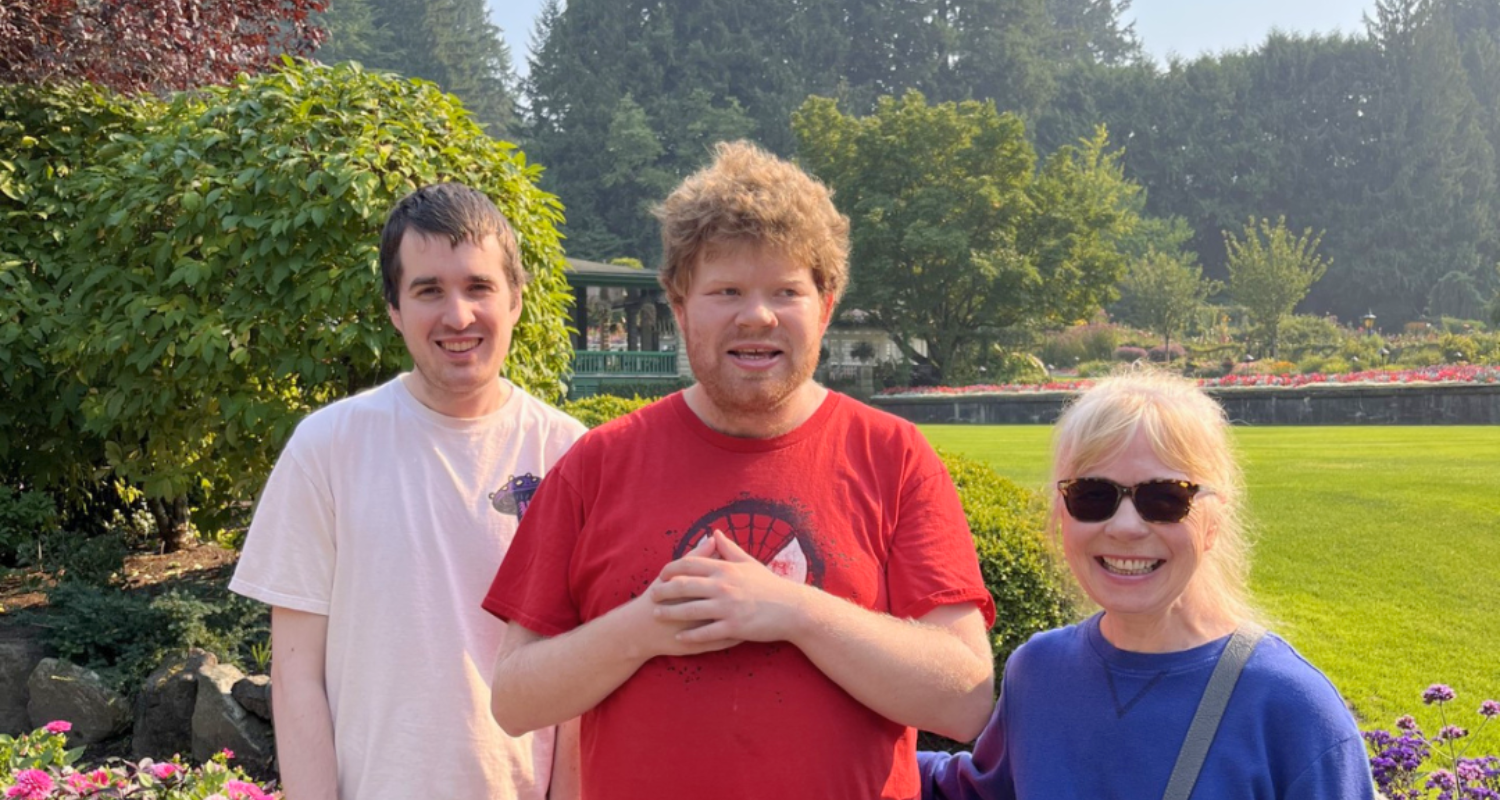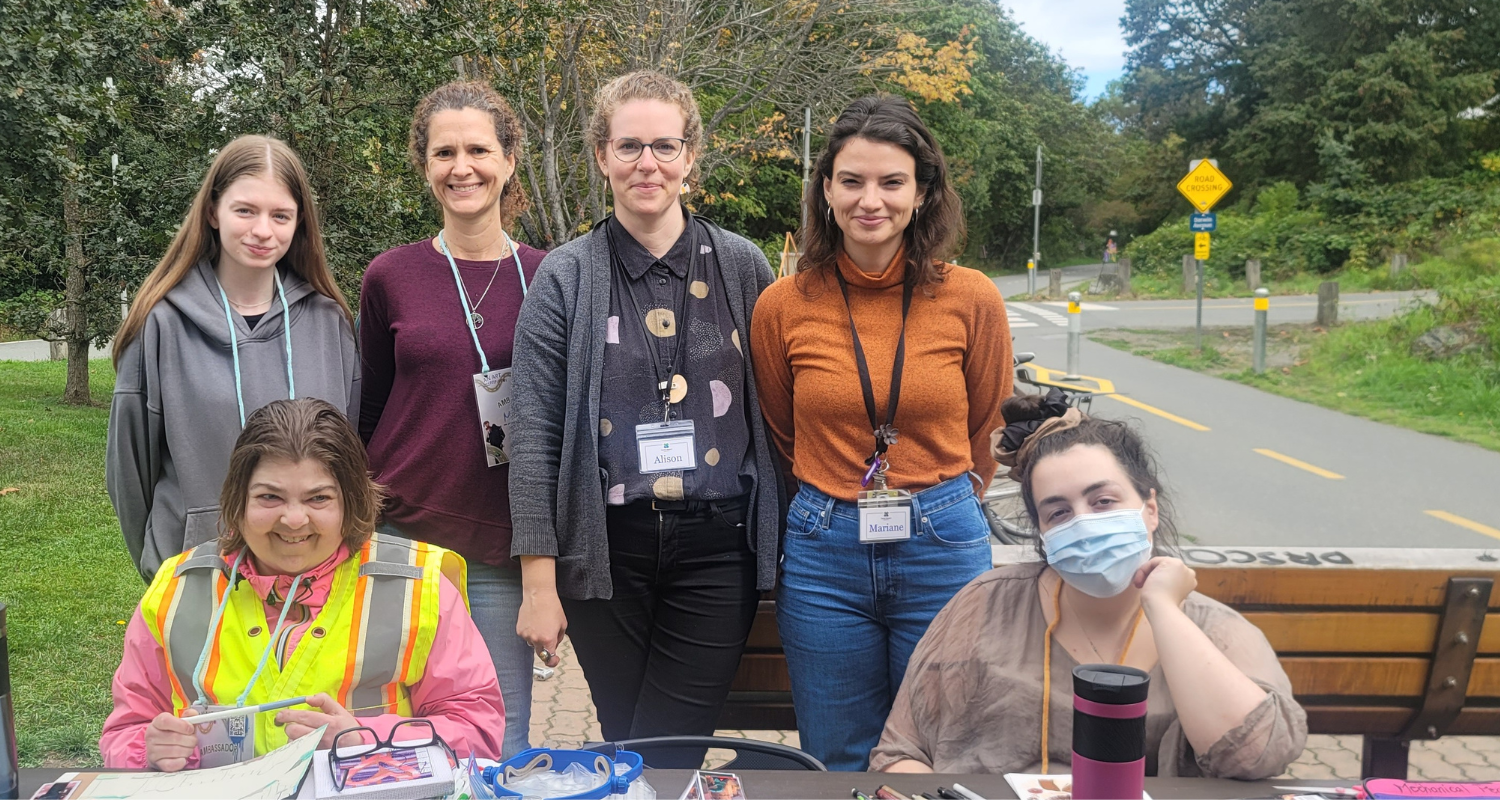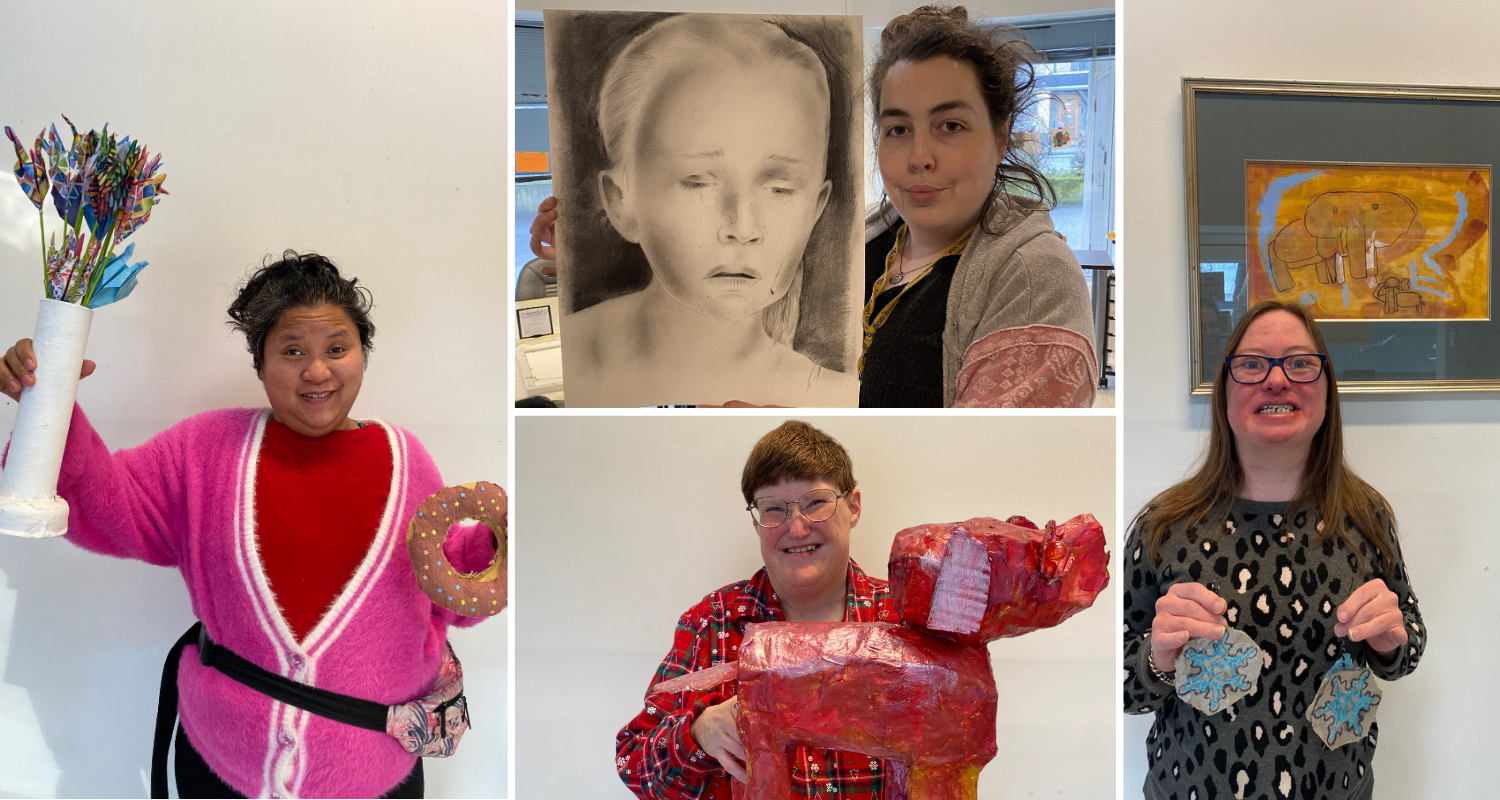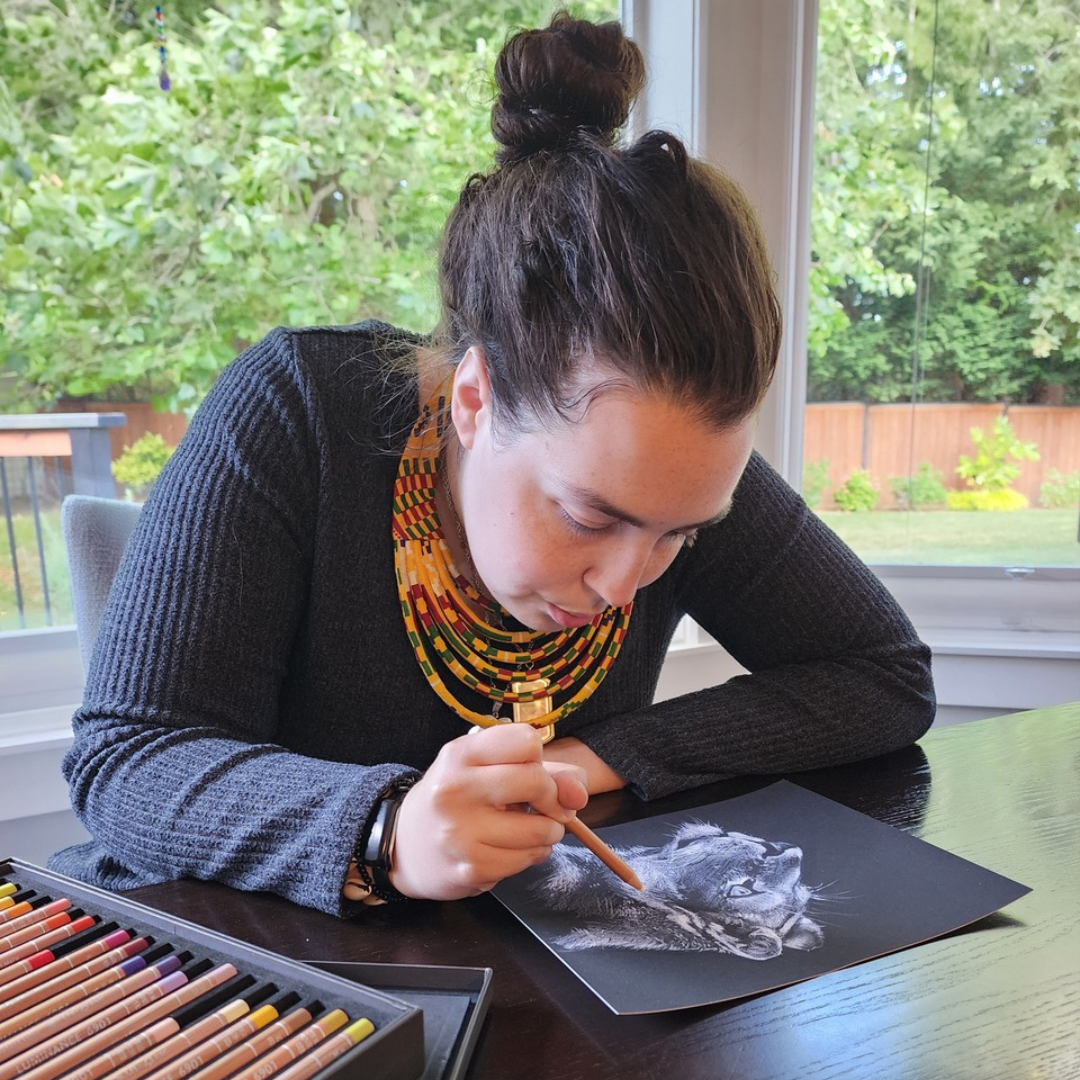by Garth Homer Society
•
4 December 2024
Tucked away in a strip mall, in a less travelled part of Victoria’s downtown, is a studio and gallery that’s home to 16 artists whose imagination, originality, strength and courage shine through their creations. Welcome to the Garth Homer Society’s ArtWorks space. Located at 2-1950 Government Street, it quietly opened in 2021 and features a main level gallery illuminated by natural light from floor to ceiling windows on two sides. Three working studios on both levels round out the dynamic footprint which ArtWorks studio and gallery coordinator Alison Duerden believes is an environment that contributes to the creative energy in the space. “Our artists explore a wide range of mediums: drawing and painting, collage, embroidery, needlepoint, jewelry-making, sculpture, mixed media, photography, stop-motion animation, and printmaking,” says Duerden, who stresses a dedicated studio space is vital for an artist’s growth. She describes the space as a safe, creative haven where they can experiment with new ideas and mediums as they develop their artistic voices. “It nurtures a sense of community, fosters collaboration, and creates opportunities for our artists to connect with the broader arts community in Victoria.” Since 1998, the ArtWorks program has provided adults with developmental disabilities, who are passionate about creating art and want to explore and further develop their art making skills, with a place and mentorship. The goal is to develop a portfolio they are proud to show publicly and offer for sale. Each artist has at least one piece always displayed. “As soon as an artist completes a piece, we celebrate the achievement by installing it in the gallery, either on the wall or on a plinth in the main area.” It’s an approach, that while less formal than most galleries, is one that captures the diversity and spirit of the artists working there says Duerden. Sarah Ksionzyk is one of those artists. As a creative with autism, her mother Brenda says prior to discovering ArtWorks her daughter was prone to limiting her talent to one distinct style. Today, as she prepares for her first commercial exhibit, Sarah, aided by ArtWorks staff’s gentle coaxing and guidance on flexible thinking, is producing very different pieces thanks to exposure to an array of art genres. “It has really expanded her world,” marvels Brenda. “The skills she’s learned have really opened so many doors for her. [ArtWorks] has done so much to get her out there in the community, doing shows and selling her art.” Gemma Kidd recently joined Artworks and wants to improve her skills with the goal of one day selling her pieces like Sarah. “I’m allowed to have my own flair,” she exclaims while explaining that ArtWorks not only teaches you new things but is also really fun. Duerden and the ArtWorks team have big plans for the future. Artists and staff are gearing up for the annual end of year ‘Paint the Halls’ exhibition that will be open to the public. In the New Year, the program will launch a pottery and ceramics class having just acquired an accessible wheel. The long-term vision is to open the gallery to the community one day a week so that art-lovers and the curious can enjoy Garth Homer clients’ talent. “Our evolving program will give us more opportunities to feature exhibitions in 2025, with more structure and exploration built in,” Duerden explains. As a graduate of the Ontario College of Art and Design, and a painter in her own right, Duerden says the level of creativity at ArtWorks blows her mind. “Working with ArtWorks clients pushes me and gives me the courage, to try things I’ve not done before.” She says key to showcasing an artist’s evolution is having a gallery that increases visibility and representation allowing the artist to share their stories, gain feedback, and be recognized as professionals. “It’s empowering for our artists to see their work appreciated by a wider audience, and that recognition plays a big role in their growth as creators and individuals.” * Henri Matisse (born December 31, 1869, Le Cateau, Picardy, France—died November 3, 1954, Nice) is an artist often regarded as the most important French painter of the 20th century. (Henri Matisse | Biography, Art Style, Paintings, Prints, & Collage | Britannica )

